How a rejection helped get me my first children's book contract (and advice I wish I could tell my younger self)
My career-changing SCBWI Summer Conference experience
One thing I’ve learned about publishing success is that intelligent perseverance is just as important as raw talent. After years of trying to get noticed by the children’s book publishing industry, I finally got my first Big Break. You can read the original version of how this happened when I posted over on KidLitArtists.com over a decade ago, but I’ve decided it’s time I post an updated version that includes what I wish I could tell my younger self.
While every person’s journey to publication is different, I hope this post helps some of you find a smoother path.
In 2010, my husband Jeff encouraged me (despite the cost) to register for the SCBWI Summer Conference. The SCBWI, for those unfamiliar with the organization, is the Society Of Children’s Book Writers and Illustrators. I first learned about the SCBWI from children’s book author Lee Wardlaw, who was also the first children’s book professional who encouraged me in my writing. Lee also introduced me to her agent, Ginger Knowlton, at Curtis Brown, who ended up taking me on as a client because of my middle grade writing.
TIP: While writing and illustrating books are solitary activities, your journey to publication does not have to be. Seek out fellow creators.
In 2010, I submitted my middle grade manuscript sample for critique at the SCBWI Summer Conference: an illustrated humor mystery. I worked hard to polish my sample, revising it until the very last minute, then paid to have it couriered to the SCBWI head office to ensure it arrived by the deadline.
The SCBWI head office called me. When I realized who was calling, I had a split second of irrational hope: OMG, they’re calling to say some editor loves my sample already so much she wants to publish it!
But no. They were calling to say they couldn’t accept the submission because it included art. I was devastated. It was my fault; see below.
TIP: Before sending out your art or writing, make sure you read ALL the submission guidelines closely.
My illustrator friend Beckett Gladney found out what happened and suggested I enter the Portfolio Showcase for illustrators. My sister encouraged me, too. I was reluctant; I didn’t have a portfolio, and I had never considered illustrating children’s books before - my focus had been on getting my middle grade writing published.
TIPS: Be open to new opportunities. Appreciate friends who help you see those new opportunities. Don’t get into a creative rut. Push yourself to venture out of your comfort zone regularly.
Beckett encouraged me, went into my Flickr account, and chose the drawings she thought were my strongest.
Note: I was surprised by the ones she preferred, which weren’t the ones I would have chosen - my looser, less polished art. She also made me a gorgeous portfolio cover. The night before the Portfolio Showcase, we spread the printouts on our hotel room carpet and decided on the order.
TIP: Enlist the help of those you trust to help find your strengths. It’s hard to be objective about your own work. Also, remember that technical perfection is not as important as connecting with your audience.
To my utter shock, I won an Honor and Mentorship award. I arrived after the award announcements were over and started browsing portfolios. Oh geez, I thought. These are all so good. What was I THINKING, entering my work in this event? I purposely didn't look for my own portfolio because I was too embarrassed. Beckett grabbed me, all excited, and said that my portfolio was up front on the winners' tables. At first, I thought there must have been a mistake. Then I was convinced I was dreaming (seriously, no lie).
TIP: Be brave and be PRESENT. How you handle rejection is as important as how you handle success.
The Mentorship Award was one of six given out that year, to illustrators whose portfolios showed the most promise. Cecilia Yung, art director and VP at Penguin, was the mentor who chose my portfolio. I had one-on-one meetings with Cecilia and the other mentors on the judging committee: Pat Cummings, Priscilla Burris, David Diaz, Bridget Marzo, and Rubin Pfeffer. Mentees included Eliza Wheeler, Andrea Offermann, Kimberly Gee, John Deininger, and Ashley Mims.
Some of the advice I received during my mentorship sessions about my portfolio (please note this advice may not apply to yours):
TIPS I received from my SCBWI Mentors:
Have more pieces showing sequential continuity. So many of my portfolio pieces were one-offs, more like greeting cards than samples appropriate for a children’s picture book.
Learn how to draw backgrounds. Rubin Pfeffer (now a friend) said I needed to decide whether or not to stick with the no background/minimal background route (he used Mo Willems as an example) or work on getting better at drawing backgrounds. I’m still working on this! 😁
Technical perfection is not as important as embracing one’s own illustration style. When I asked Cecilia if she thought I should take art courses, she advised me NOT to do this since she worried that I would be overly influenced and that it would change my art style. (Note: This is NOT a strike against going to art school / taking art courses! Cecilia knew I was still in my easily-influenced newbie stage as an illustrator.)
I also received an Honor Award:
The Honor Award was one of two runners-up. You can see the announcement on the SCBWI Conference Blog (the Grand Prize winner was Molly Idle, and the other Honor Award recipient was Ye Won Lee). The panel of judges included Justin Chanda, editor and publisher at Simon & Schuster Books For Young Readers.
Justin happened to be looking for an illustrator for Michael Ian Black’s newest picture book; he sent samples of my art to Michael, who gave me the green light. (Note: Michael is on Substack!)
I’m grateful to Michael for his willingness to take on an inexperienced newbie illustrator and to Justin for pairing me with a high-profile author. Justin later told me this is one way to help boost awareness of a new/unknown illustrator.
Years later, the Quill & Quire interviewed Michael and Justin for a feature piece about me - you can read the article here.
The photo above was taken from one of my book tours with Michael at Books Of Wonder in New York. I have been learning SO much working with these three at Simon & Schuster; I’ll save those tips for a future newsletter.
Tip: Find people who believe in you and support you. Cherish them and be grateful. I’ve only named a few of the many friends and family members who helped me on my journey to publication.
The photo above: I created a Fairy Godmother Wand to present to Justin Chanda at the Simon & Schuster offices (you can see Michael in the background).
But getting back to how this all began ... Try not to let rejections get you down. You never know what opportunities they'll bring. It turns out that getting my mss rejected was a good thing, since conference attendees can only participate in the mss critique OR the portfolio showcase, not both.
So ... if I HADN'T been rejected by the mss critique program, then I wouldn't have been able to participate in the Illustrator Portfolio Showcase even if I had wanted to.
Final Tip: Don’t be so fixated on one door closing that you miss seeing others opening.





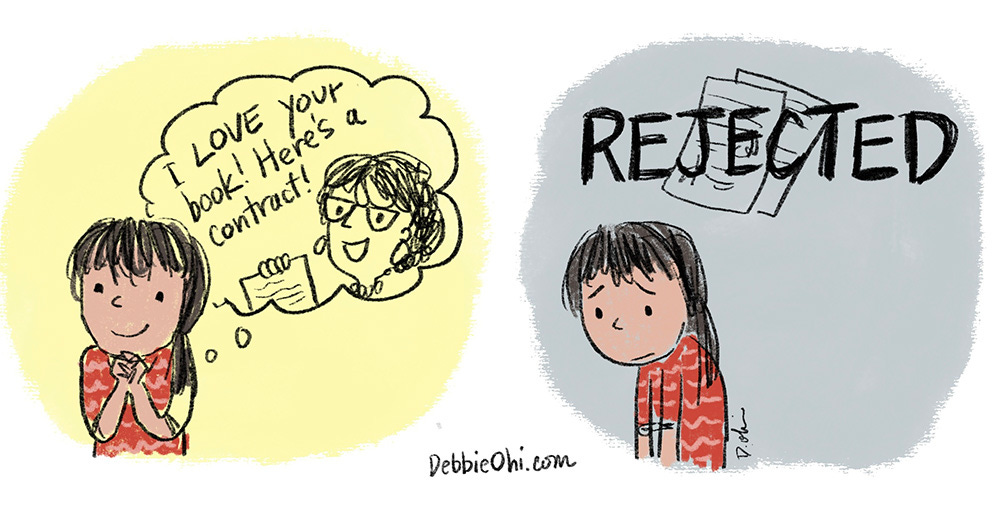


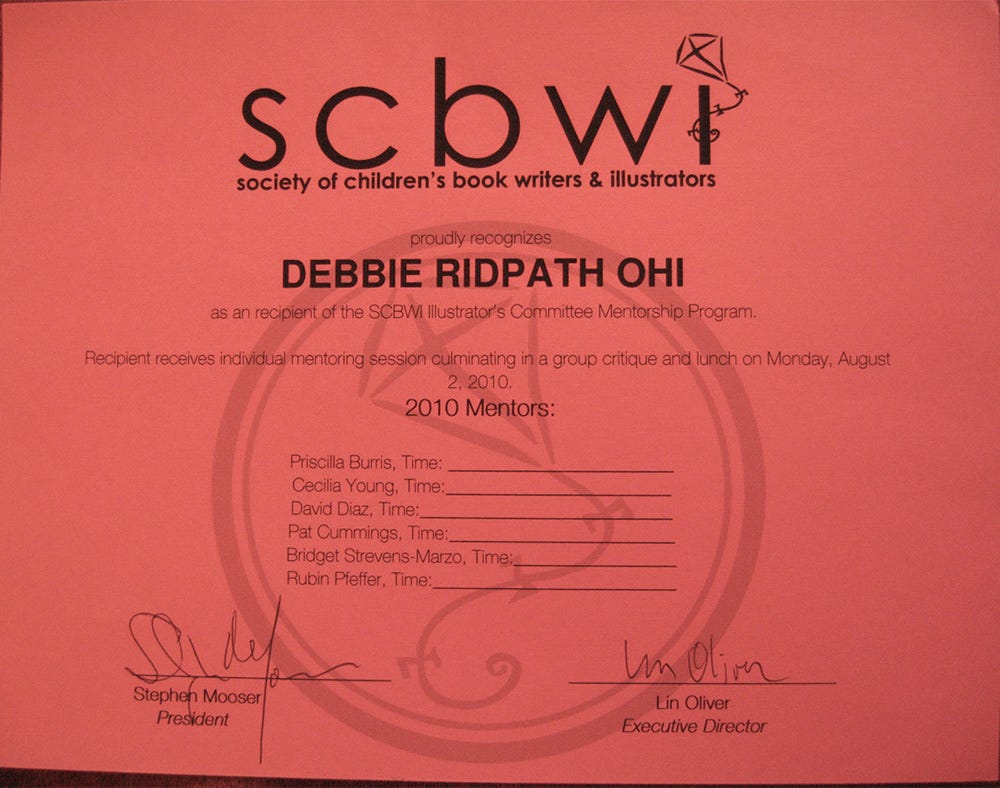


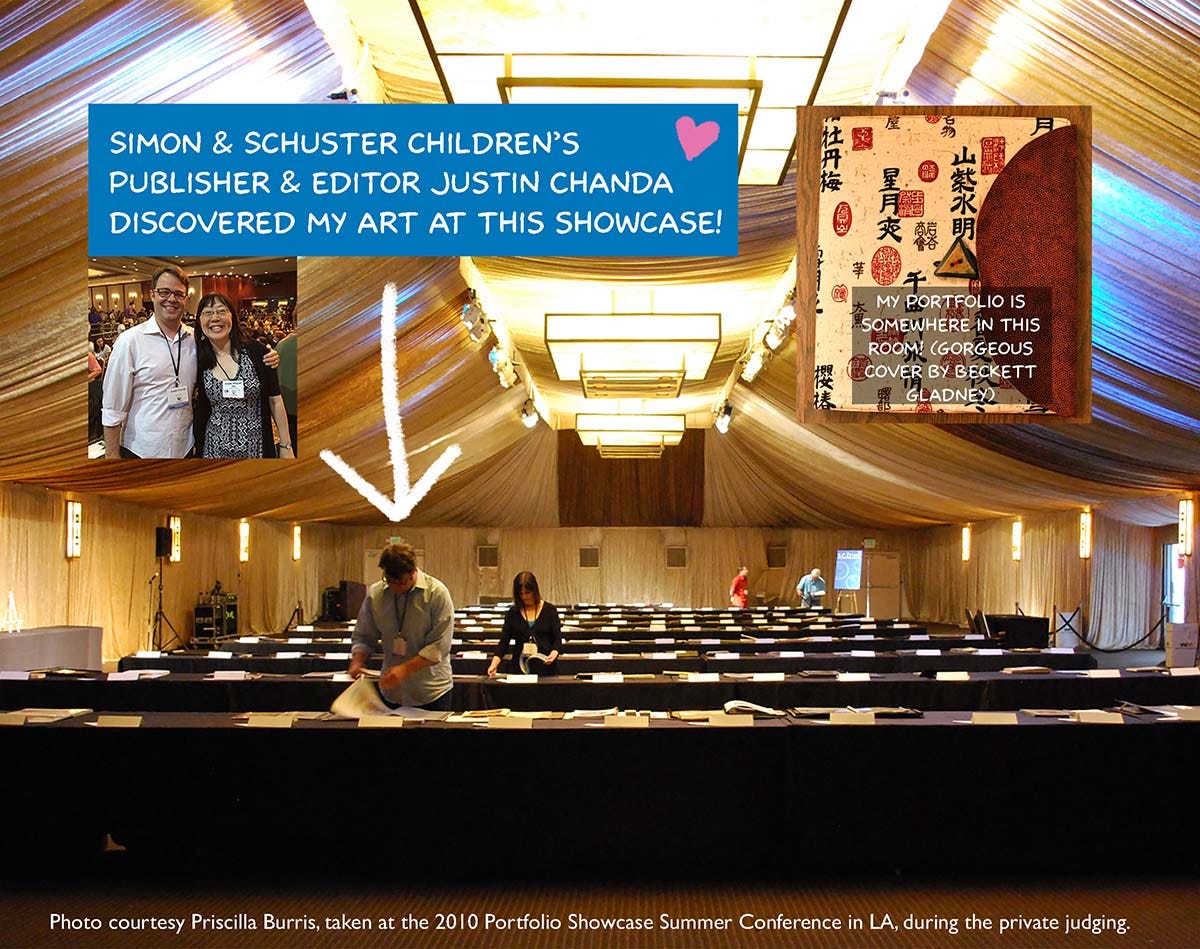
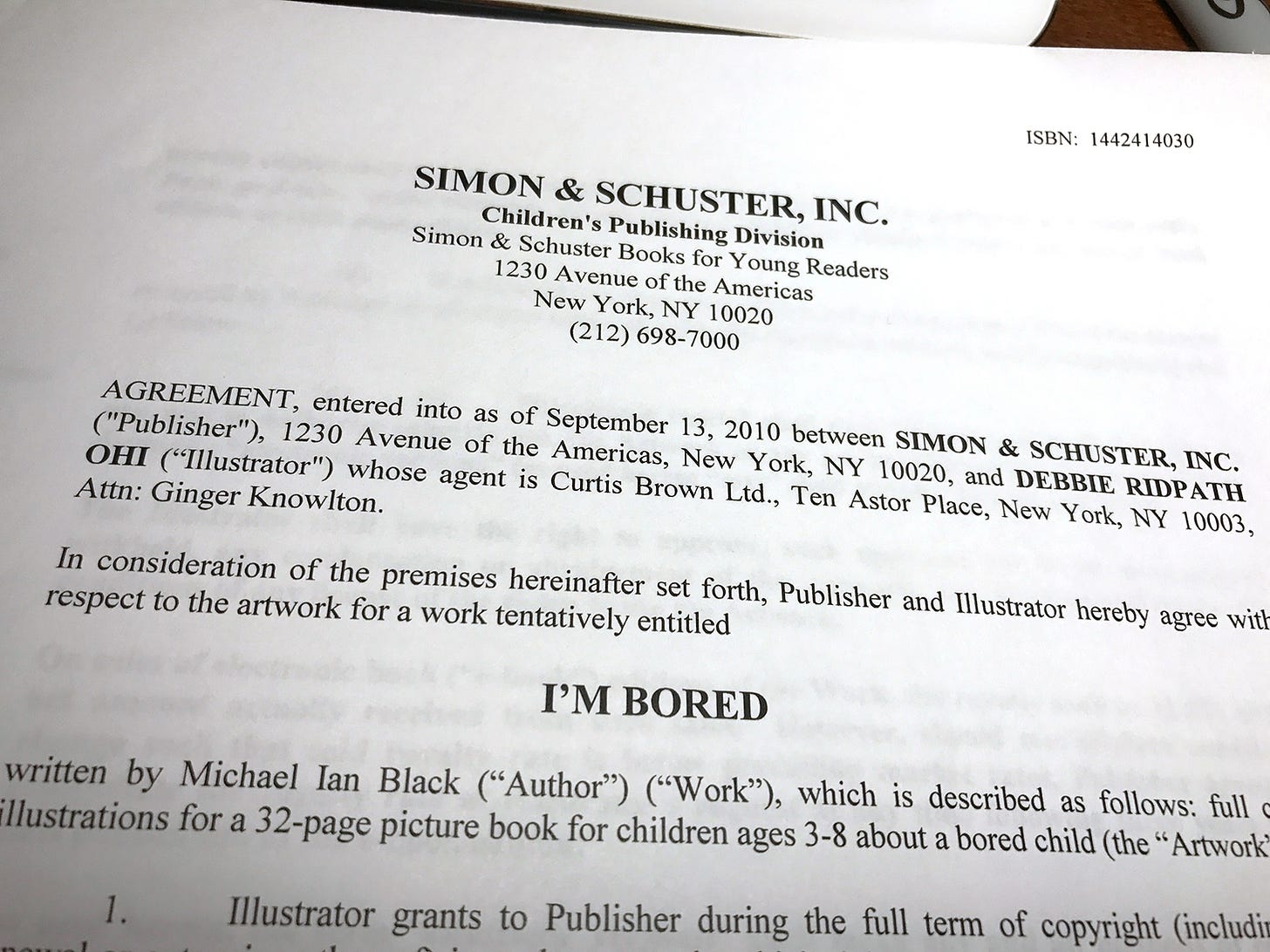
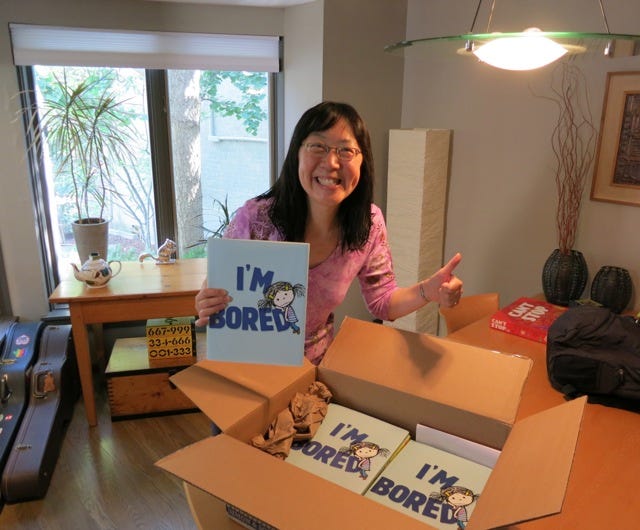



Love reading this! I had assumed you just floated into the illustration world using a magical umbrella. But clearly it takes work!
Debbie, I just finished reading this series after finding you on Twitter. I love how much and in what ways you give back to the kid lit community. Thanks for what you do!
P.S. I'm so glad you persisted, and it meant so much to me, precisely today, to read your story.